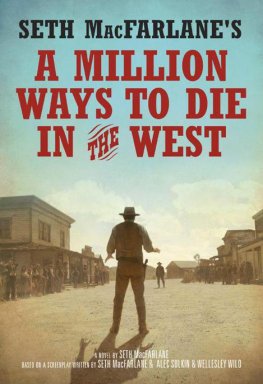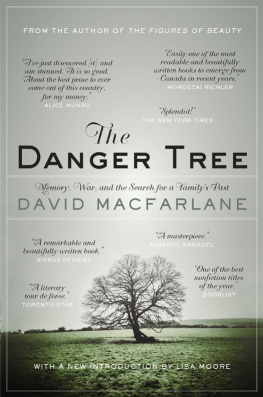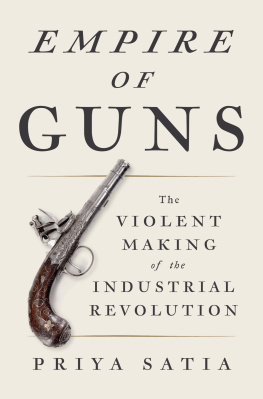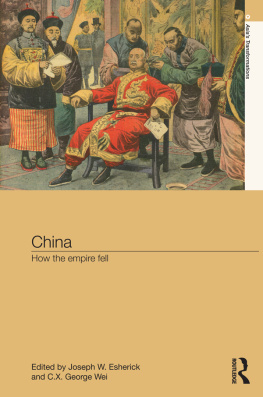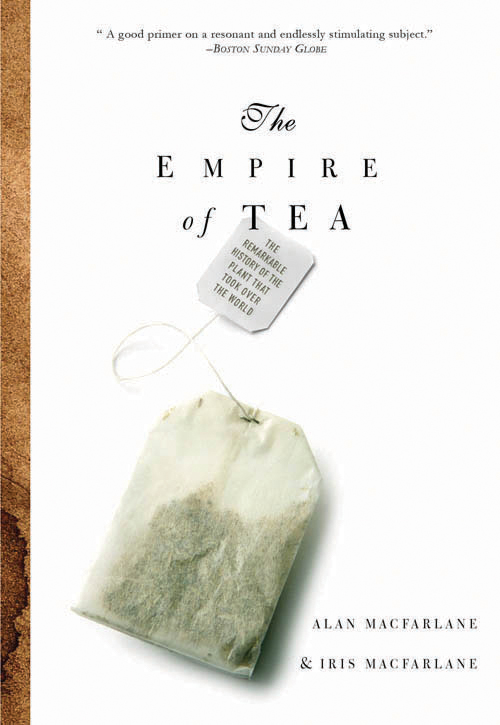First published in the United States in 2004 by
The Overlook Press, Peter Mayer Publishers, Inc.
141 Wooster Street
New York, NY 10012
www.overlookpress.com
For bulk and special sales, please contact sales@overlookny.com
Copyright 2003 by Alan Macfarlane and Iris Macfarlane
All rights reserved. No part of this publication may be reproduced or transmitted in any form or by any means, electronic or mechanical, including photocopy, recording, or any information storage and retrieval system now known or to be invented, without permission in writing from the publisher, except by a reviewer who wishes to quote brief passages in connection with a review written for inclusion in a magazine, newspaper, or broadcast.
ISBN 978-1-46830-601-9
To the people who will never read this book, the tea labourers of Assam
As always, this book has been enormously enriched by the help from many friends, colleagues and others. Michelle Schaffer and H. B. F. Dixon of Kings College and Derek Bendall of Trinity College, Cambridge helped to check the biochemistry. Chris Bayly, Mark Elvin, Brian Harrison and David Sneath gave advice on the history and anthropology. Lipeni, Christine and Dirang Lungalong showed us Calcutta. Mr and Mrs Singh, and Lily and Smo Das advised on Assam. Babs Johnson accompanied Iris on her trip to Assam. Brynny Lyster helped with research at the India Office Library. Hilda Martin provided her usual supportive advice (and cups of tea). Lily Blakely gave us an insight into how tea is transmitted in mothers milk. David Dugan, Ian Duncan and Carlo Massarella helped in the filming of tea ceremonies and pursuing the tea theme. Andrew Morgan and Sally Dugan read the book carefully and offered excellent advice. Elizabeth Jones, then doing a dissertation in History and Philosophy of Science at Cambridge, read the text through twice and made many helpful criticisms. A number of her suggested quotations have been incorporated, especially in chapter 5. At Ebury Press, Jake Lingwood, Claire Kingston and all who helped to produce the book. Above all, much of the work came out of the discussions and careful reading and re-reading of the book by Sarah Harrison and Gerry Martin. And, of course, there are the countless people who have sacrificed their lives to produce tea over thousands of years, to a few of whom this book is dedicated. To all of them, deepest thanks.
This book is written by a tea planters widow, Iris, and son, Alan. It has two views and two agendas. The questions behind my writing are described here. Those behind my mothers work are described in chapter one.
When I started to write this book I had a disparate set of puzzles and memories in my head, like disconnected pieces of a jigsaw. I was born in Shillong, Assam, in 1941, in the centre of the area where tea was first discovered. I have vague memories of my childhood on a tea plantation in Assam, the son of a tea manager. The indistinct memories of wide expanses of tea and driving between them in a Jeep. The smell of the factory, full of piles of tea and ancient churning machines. Of large, cool, bungalows surrounded by beautiful flowers and tended lawns. Of visits to mountain rivers, where I swam and fished and ate cold curries. Of trips to the club to watch polo and play tennis.
All of these memories of the first five years of my life are in fact probably mainly memories from two later trips back to Assam in my teens, after I had gone to boarding school in England. Of these, I particularly remember the shock of Calcutta, with its luxury alongside abysmal poverty. I vowed one day to return to try to improve the lives of those in the awful slums. But of the life of the labourers and servants who hovered on the edge of my privileged childhood and provided the wealth that gave me an expensive education I remember nothing. It probably never occurred to me, young as I was, to speculate about their lives. Neither did I, at that time, wonder about how the tea industry arrived in Assam, why the British were in charge, or even why tea was grown on plantations at all. This book is partly a search for answers to these unasked questions.
In my twenties I tried to return to India to learn more, but was unable to go to Assam for political reasons. So I went to work as an anthropologist in a neighbouring country in the Himalayas, Nepal, and to investigate a similar people, the Gurungs. There I studied the lives of those who, as recruits to the famous Gurkha regiments of the British Army, had helped to guard the tea gardens and their surrounding hills.
My heart was still in Assam, but without the chance of returning there, I pursued a five-year study on the history and culture of the Naga people of the area. This only brought up further puzzles. Why had the British extended their Empire so far up into the northeast? Why had they pushed up into the Naga Hills and with what consequences? My researches circled round the edges of the tea gardens, but only added to the oddness at the heart of the phenomenon, the presence of the tea gardens themselves.
In 1990 I visited Japan, and on this and three subsequent visits I began to try to understand that ancient civilisation as part of my anthropological studies. Among the most striking memories of Japan was the central place of tea in Japanese culture. We were offered it all the time and could see its widespread effects on religion, ceramics and every part of life. Attending several tea ceremonies and visiting teahouses highlighted its extraordinary importance. Trying to understand Japan led me to read books on religion and aesthetics, which suggested that tea is far more than just another hot drink, as I had previously always regarded it. It was seen by the Japanese as a medicine with almost divine properties. There was something special about tea. If it had so much effect on Japanese civilisation, could this also be true elsewhere? Was this part of the reason for the acres of green bushes of my childhood?
All of these half-formed ideas and experiences were in the back of my mind when, in 1993, I began to explore once again the question of the genesis of the Industrial Revolution. An extraordinary, unprecedented, type of civilisation emerged in the west in the eighteenth century. Why did it first emerge in Britain? Why at that time? Why at all?
As we constructed a teahouse in our Cambridgeshire garden during the summer of 1994, and I turned over the puzzles in my mind, I began to ask myself whether the answer could not quite simply lie in the tea bushes of my childhood. Was the solution to be found in the development of tea drinking?
As soon as this occurred to me, it all seemed so obvious. Tea flooded into Britain from the 1730s and spread through much of the population. This occurred just at the point when waterborne disease faded away as a major killer. Boiling water to make the tea would kill off most of the harmful bacteria in the water. It would provide a safe drink for the populace. This might be all that needed to be said.
Yet there were further puzzles. First, all of the Chinese and Japanese authors who wrote of tea, and even the European doctors who investigated it when it first arrived in Europe, were convinced that there was something extra in tea, some beneficial substance betrayed by its bitter taste, an astringent medicine which did humans good. If this were true, it would help answer other puzzles for example, why it was that even infants who were not drinking tea, but being breast-fed, increasingly escaped infant diarrhoea. Could they be being protected by whatever it was that was in the tea and flowed through their mothers milk? An investigation showed that this was indeed possible, and that the tannin of tea is not actually tannin, but a substance called phenolics that has powerful antiseptic and antibacterial effects.


